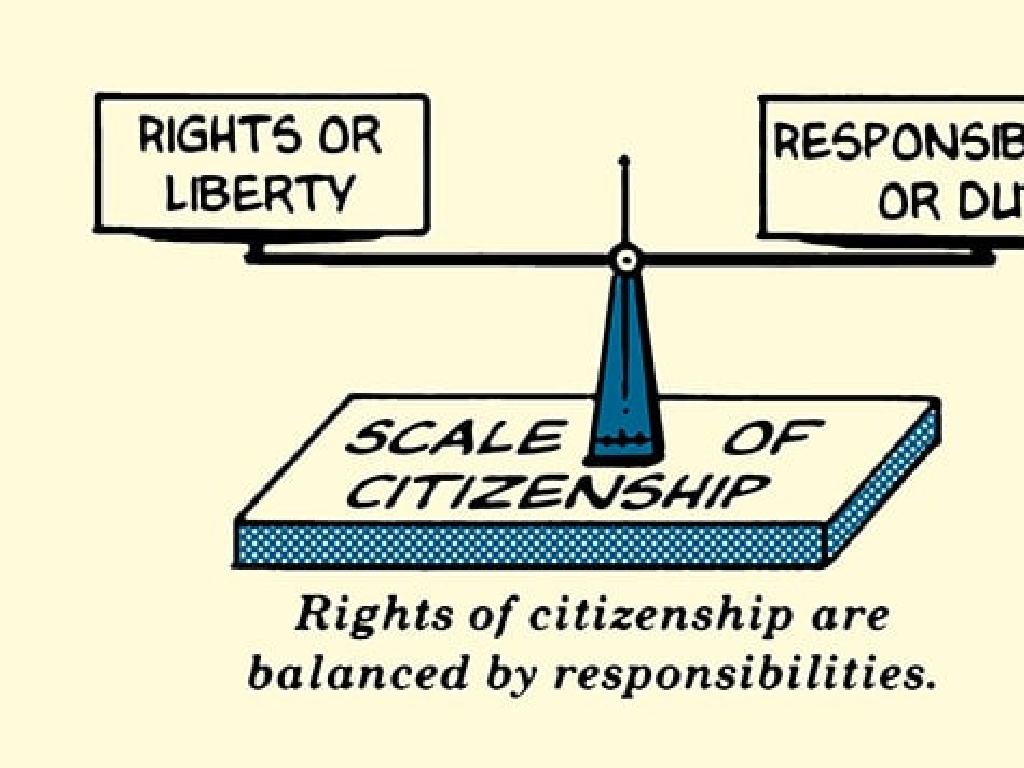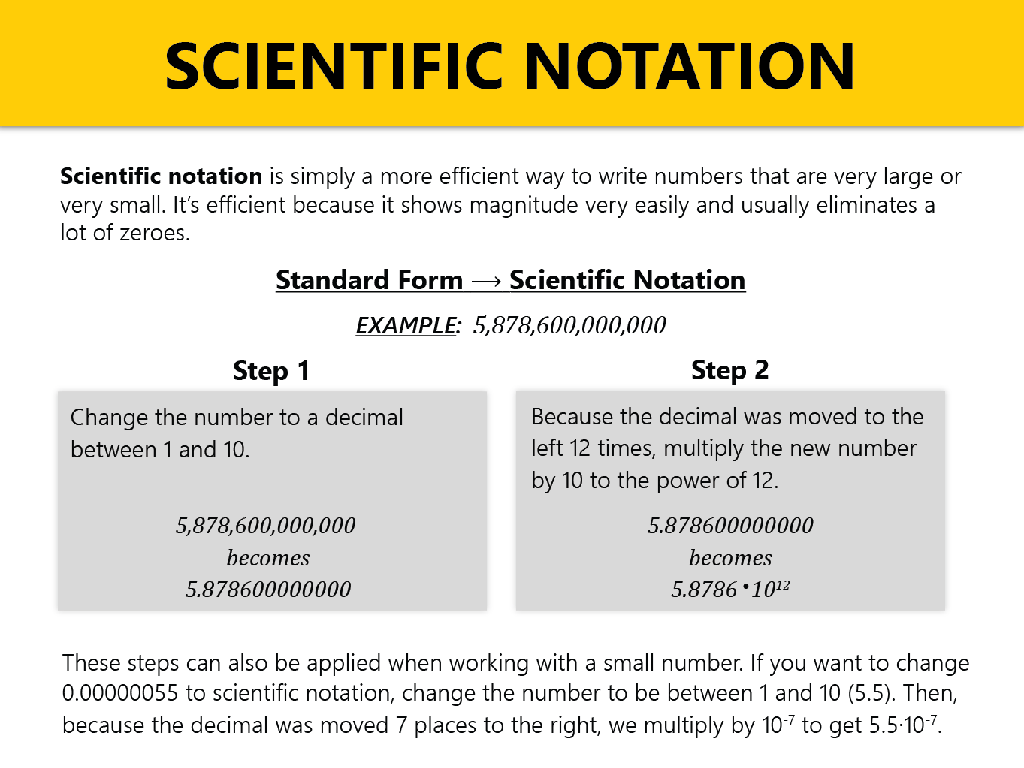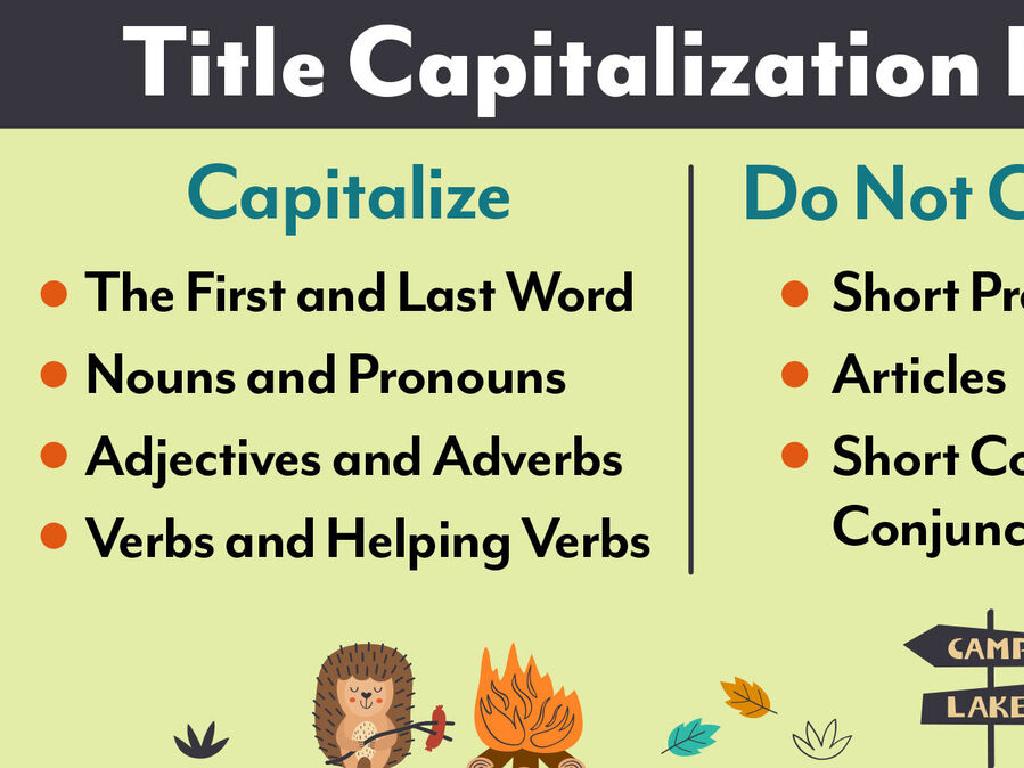Which Sentence Matches The Definition?
Subject: Language arts
Grade: Third grade
Topic: Multiple-Meaning Words
Please LOG IN to download the presentation. Access is available to registered users only.
View More Content
Exploring Multiple-Meaning Words
– Define multiple-meaning words
– Words that sound the same but have different meanings, like ‘bat’ for sports or animals.
– Words with different meanings
– ‘Bark’ can mean a tree’s outer layer or the sound a dog makes.
– Context determines meaning
– The words around the tricky word tell us which meaning is correct.
– Practice with examples
– We’ll look at sentences and use context to choose the right meaning.
|
This slide introduces the concept of multiple-meaning words to third-grade students. Begin by explaining that some words in English have more than one meaning, and it’s the job of the reader to figure out which meaning is intended based on the context of the sentence. Provide clear examples, such as ‘bat’ and ‘bark’, to illustrate how context clues can change the meaning of these words. Engage the students with practice sentences where they apply their understanding of context to determine the correct meaning of multiple-meaning words. Encourage participation and discussion to ensure comprehension.
Words with Many Meanings: Homonyms
– What are homonyms?
– A word with more than one meaning
– ‘Bat’ has two meanings
– Used in sports & an animal that flies at night
– ‘Bark’ can mean two things
– Sound a dog makes & tree’s outer layer
– Discover more homonyms
|
This slide introduces the concept of homonyms to third-grade students, which are words that sound the same but have different meanings. Use examples like ‘bat’ and ‘bark’ to illustrate the point. ‘Bat’ can refer to the piece of sports equipment used in baseball or the nocturnal creature. ‘Bark’ can be the sound a dog makes or the outer layer of a tree. Encourage students to think of other homonyms and use them in sentences to show their different meanings. This will help students understand how context can change the meaning of a word and improve their vocabulary and reading comprehension skills.
Context Clues: Understanding Multiple-Meaning Words
– Using context to find meaning
– Context clues help us figure out the right meaning of a word that has more than one meaning.
– Read sentences for word meaning
– Look at the words around the tricky word and think about what makes sense in the sentence.
– Clues that reveal the meaning
– Words or phrases in a sentence that hint at what the word means.
– Practice with example sentences
|
This slide is aimed at teaching third graders how to use context clues to determine the meaning of words with multiple meanings. Emphasize the importance of reading sentences carefully to understand how a word is used in context. Provide examples of sentences where the meaning of a word changes based on the context. For instance, the word ‘bark’ can refer to the sound a dog makes or the outer covering of a tree. Show how different sentences indicate which meaning is correct. Encourage students to look for definition clues, example clues, synonym/antonym clues, and inference clues. Practice this skill by providing sentences with multiple-meaning words and asking students to use context clues to determine the meanings.
Matching Sentences to Definitions
– Understand ‘bark’ has multiple meanings
– ‘Bark’ can mean a tree’s skin
– Like the outside layer of a tree
– ‘Bark’ can also mean a dog’s sound
– Like when your dog goes ‘woof’
– Find the sentence with the correct ‘bark’
– Use the definition to choose the right one
|
This slide is aimed at helping third-grade students understand the concept of multiple-meaning words through the word ‘bark’. Begin by explaining that some words can have more than one meaning. Provide examples of sentences using ‘bark’ to refer to the outer covering of a tree and ‘bark’ as the sound a dog makes. Encourage students to use context clues from the sentences to determine which meaning of ‘bark’ is being used. For the activity, present sentences where the word ‘bark’ is used in different contexts and ask students to match them to the correct definition. This will enhance their vocabulary and reading comprehension skills.
Let’s Practice: Multiple-Meaning Words!
– Interactive class activity
– Match definitions to sentences
– Look at sentences with the same word used differently
– Discuss our choices
– Why did you choose that sentence?
– Learn from each other
– Share thoughts and understand different perspectives
|
This slide is for an interactive class activity where students will practice identifying the correct sentence that matches a given definition, focusing on words with multiple meanings. The activity will involve presenting students with a series of sentences that use the same word in different contexts. Students will be asked to match each sentence with the correct definition of the word as used in that sentence. Encourage students to discuss their choices and reasoning with the class, fostering a collaborative learning environment. This exercise will help students understand how context can change the meaning of a word and enhance their vocabulary skills. As a teacher, facilitate the discussion, correct misconceptions, and provide positive feedback to support the learning process.
Word Detectives: Exploring Multiple-Meaning Words
– Form detective groups
– Find words with more than one meaning
– Look for words used in different ways in the passage
– Match meanings to sentences
– Decide which sentence uses the word in the same way as the definition
– Present your discoveries
|
This group activity is designed to enhance students’ understanding of multiple-meaning words through collaborative learning. Divide the class into small groups and assign them reading passages. Their task is to identify words that have more than one meaning based on the context of the sentences. Once they find these words, they should use context clues to match each meaning with the correct sentence from the passage. After completing the activity, each group will present their findings to the class, explaining how they determined the meanings. This will help reinforce their comprehension skills and ability to interpret words in various contexts. Provide guidance on how to use context clues effectively and encourage discussion among group members for a thorough understanding.
Class Activity: Multiple Meanings, Multiple Sentences
– Pick a word with more than one meaning
– Write two sentences using the word differently
– Make sure each sentence shows a different meaning of the word
– Exchange sentences with a classmate
– Guess each other’s word meanings
– Try to figure out the context clues that show the word’s meaning
|
This activity is designed to help students understand that some words can have more than one meaning, and context clues in sentences can help us figure out which meaning is being used. Start by explaining what multiple-meaning words are. Then, have students choose a word and write two sentences that use the word in different ways. After writing, students will pair up to exchange their sentences and work together to guess the meanings based on the context. This exercise will enhance their vocabulary and comprehension skills. Possible words for the activity: bat (animal/sports equipment), park (verb/noun), and band (musical group/ring).
Review and Reflect: Multiple-Meaning Words
– Learned about words with multiple meanings
– Words that sound the same but have different meanings, like ‘bat’ the animal and ‘bat’ used in sports.
– Understanding context is crucial
– Context helps us figure out which meaning is correct in a sentence.
– Share your interesting discoveries
– What did you find fun or surprising about multiple-meaning words?
|
In this slide, we’re wrapping up our lesson on multiple-meaning words. We’ve learned that some words look and sound the same but have different meanings depending on how they’re used in a sentence. Understanding the context of a word is important because it helps us determine the correct meaning. Ask the students to reflect on what they found most interesting or surprising about multiple-meaning words. Encourage them to share examples they came across and discuss how context helped them understand the right meaning. This reflection will help reinforce their learning and allow them to appreciate the nuances of language.
Homework Challenge: Exploring Multiple-Meaning Words
– Find 5 multiple-meaning words
– Write 2 sentences per word
– One sentence for each meaning of the word
– Show different meanings
– Use context to show how the meaning changes
– Share your sentences in class
|
This homework task is designed to help students understand that some words have more than one meaning, which can change depending on how they are used in a sentence. Encourage students to be detectives in their homes or while reading a book, looking for words that can have multiple meanings. They should write two sentences for each word they find, using the word in different contexts to show its different meanings. In the next class, students will have the opportunity to share their sentences, which will help reinforce their understanding of context and how it affects word meaning. This activity also promotes creativity and critical thinking as they construct sentences that clearly demonstrate the different meanings of the words.




